How to clean a gas water heater with your own hands
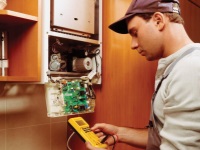
Performing cleaning of the speaker at home is quite possible with your own hands, if you know about all the features of maintenance and cleaning of such equipment. In addition, it is important to remember that any work involving the disassembly of the speaker, it is allowed to perform only after disconnecting the device from the water supply and from the gas supply.
Maintenance work
To ensure that the gas heater functions properly and does not pose a threat to either the premises or the health of the occupants, it is important to carry out these manipulations annually:
- Removing fouling and soot from the burner.
- Cleaning the heat exchanger, which includes removing soot, as well as flushing the pipes of the formed scale, if necessary.
- Cleaning the internal parts of the equipment from dust.
- Cleaning of the water inlet assembly.
- Evaluating the tightness of the main systems of the heater (water as well as gas) with replacement of the gaskets in these systems.
- Assessment of serviceability of the draught sensor.
- Lubricating all moving parts when the need arises.

Flushing at Home
Cleaning the water inlet
Cleaning this assembly is extremely important because it is responsible for the cleanliness of the water that enters the speaker. There is a filter on the spigot of the water inlet, which prevents contaminants that cause corrosion or scale formation from getting inside the heat exchanger. In addition, part of the water intake unit is a membrane, which is responsible for supplying gas automatically when the water intake stops.
First, disconnect the water inlet from the body of the unit to make it easier for you to perform all work on this assembly. Using a screwdriver, unscrew the fasteners and remove the cover. Thoroughly clean the filter (rinsing it with water is usually sufficient) and check the membrane (it should not have concave or deformed areas). If necessary, replace the diaphragm with a new one, install it, and then reassemble the water receiver.
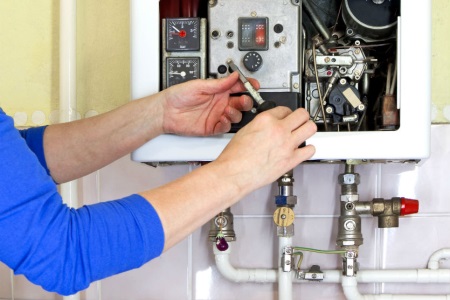
Descaling the heat exchanger
To wash the scale out of the pipes, perform the following manipulations:
- Remove the heat exchanger from the speaker, then put it in an empty container.
- Dissolve citric acid in warm water (take 100-200 grams of powder per liter of liquid).
- Pour the resulting remedy inside the heat exchanger.
- After ten to fifteen minutes drain this solution.
- Wash the part well under running water.
- If necessary, repeat this process until the scale is completely removed.


Removing soot and carbon deposits from the burner
To clean the burner, first it is important to turn off the heater and cut off the gas supply to it. Next, your actions should be as follows:
- Remove the cladding by unscrewing the necessary screws and disconnecting the wires that go from the display to the control unit and the temperature sensor.
- Remove the burner and then disconnect the manifold.
- Using a brush, dust the outside of the manifold first and then the burner, and then wipe the parts with a damp cloth.
- Use a dust brush to remove the dust inside the part (in the internal channels).
- After removing the soot from the spark plug electrodes as well as the combustion sensor, clean their contact group.
- Wash the burner with soapy solution prepared in advance, paying attention to the inner surfaces of the sections (use a "brush").
- Then rinse the burner with clean water (running) and dry it.
- Put the part back in place.

About cleaning the gas boiler from soot without removing it, see the following video on Youtube channel "TVorim".
Signs for unscheduled cleaning
Scheduled cleaning of any gas water heater is recommended every 12 months, but there are times when an unscheduled cleaning of the appliance is needed:
- There is a lot of dust in the air of the room in which the heater is operating. The change in color of the burner flame will tell you that the device should be cleaned. Once the color has turned yellow or smoky (normally the flame will be blue), it means that the dust has clogged the burner and it should be cleaned as soon as possible.
- The room in which the burner is installed has been repaired or other work has been carried out, resulting in construction dust entering the equipment. If this dust is not removed in time, the risk of ignition of the unit increases.
- If the heat sensors of the column have started to activate frequently, the unit should be cleaned of limescale, as it interferes with the effective cooling of the device. Also, the fact that there is an excessive amount of scale in the heat exchanger channels will indicate deterioration of liquid circulation.
- Be sure to clean the speaker if the water begins to heat for much longer than it should. Also a direct indication for cleaning the device is the speaker turning off after a few minutes of operation. If the speaker does not turn on at all, your first action should also be to clean it.
Other maintenance work
Seal replacement
If the gas heater was disassembled for routine cleaning, with its communications (gas or water) were dismantled and then installed back, be sure to install new seals.
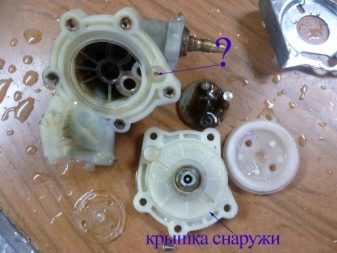
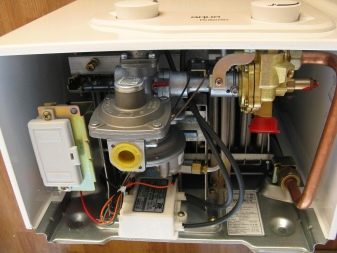
Checking the tightness
When it is time for the next cleaning of the device, which includes the disassembly of gas or water connections of the column, it is important to check the tightness of the assembly of the device, to prevent the appearance of water or gas leakage.
- After connecting the pipes to the speaker, first turn on the hot water tap, then supply cold water to the unit by opening the stop tap in front of the speaker. As soon as the unit's circuit is filled with water, close the hot water tap and carefully inspect all connections.
- After connecting the gas line, open the shutoff valve in front of the heater. The equipment must not be in operation. The joints should be soaped and carefully inspected. You will be informed about leaks and gas leakage by bubbles appearing in the places.
Checking the operation of the thermostat (draught sensor)
To assess the serviceability of such a sensor, you will first have to disconnect the pipe from the heater, which is used to withdraw gas. Then you need to turn on the equipment and set the operating mode, providing full opening of the gas valve and the rated water flow. Take a metal sheet and put it on the gas pipe, closing it. The boiler should turn off within two minutes.
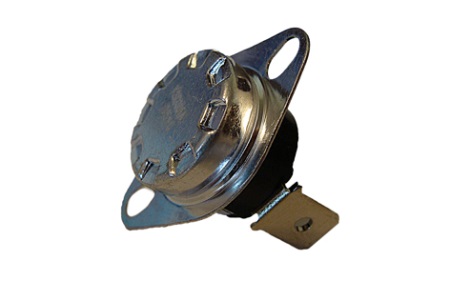
If the thermostat does not work, remove it to replace it with an identical part, then carry out the same test to make sure that the new draught sensor is functioning correctly. After that, the gas pipe (outlet) is connected to the heater and check the tightness of its connection.
See the following video for why it is important to have the gas heater serviced in time.




